The Baltic Sea is a place few know much about outside of the countries that border it. Denmark, Germany, Poland, Lithuania, Latvia, Estonia, Russia, Finland, and Sweden border the often dangerous Baltic Sea. It is one of the few places you can still see multiple types of porpoises and seals. Also, it is the largest body of brackish water in the world, spanning 149,000 miles, and is surprisingly shallow.
It is an extension of the North Atlantic Ocean that spans almost as far north as the Arctic Circle. The Baltic Sea is what separates Scandinavia from the rest of Europe. Along the Continental Shelf, the Baltic Sea is the shallowest. The temperature along the Baltic Sea ranges from 14 °F – 63 °F from winter to summer in different areas. Even with shallow water, the Baltic Sea remains frigid year-round. Now, let’s talk about the sea life residing in it.
Baltic Sea Life
1. Harbor Porpoise (Phocoena phocoena)
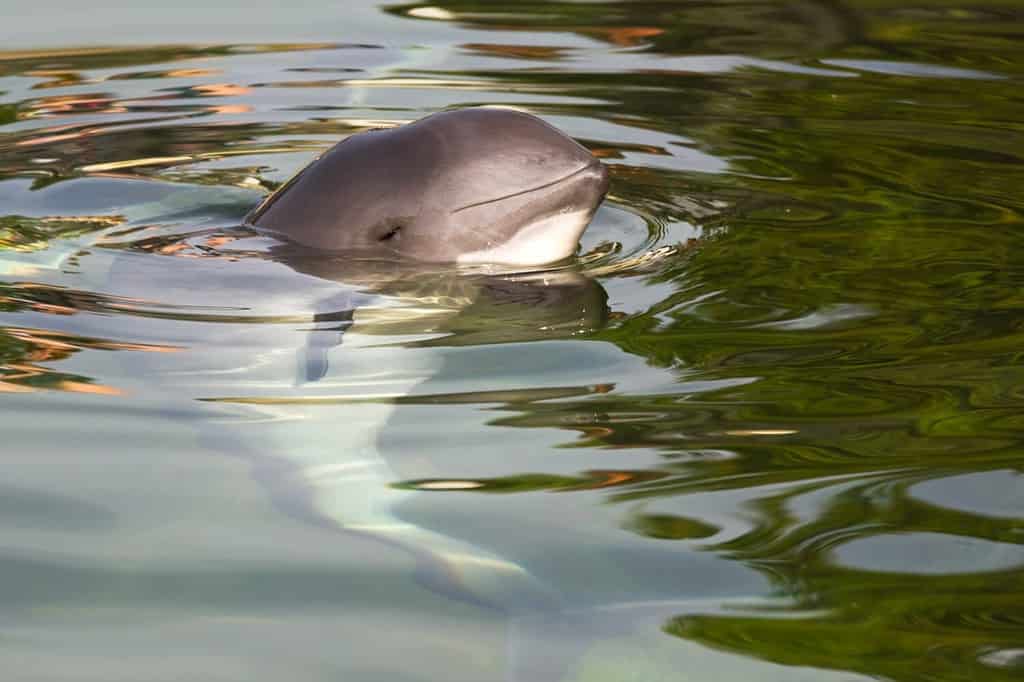
The Harbor
porpoise
is timid and not as playful as its relatives.
©onutancu/Shutterstock.com
Appearance: They are dark grey on the top with lighter grey sides and a white underbelly. The porpoise does not have a beaked nose like dolphins. It has a short, round body and a small head. It has a dark stripe that runs from the corners of its mouth to its pectoral fins.
Size: The females are larger than the males measuring approximately 6 feet long and weighing approximately 132 pounds. The males are 4.75 feet long and weigh 110 pounds.
Diet: The Harbor porpoise is an opportunistic hunter feeding mainly on fish. It has struggled in recent years due to environmental toxins, overfishing, and hunting. It is critically endangered and 450 remain.
2. Basking Shark (Cetorhinus maximus)
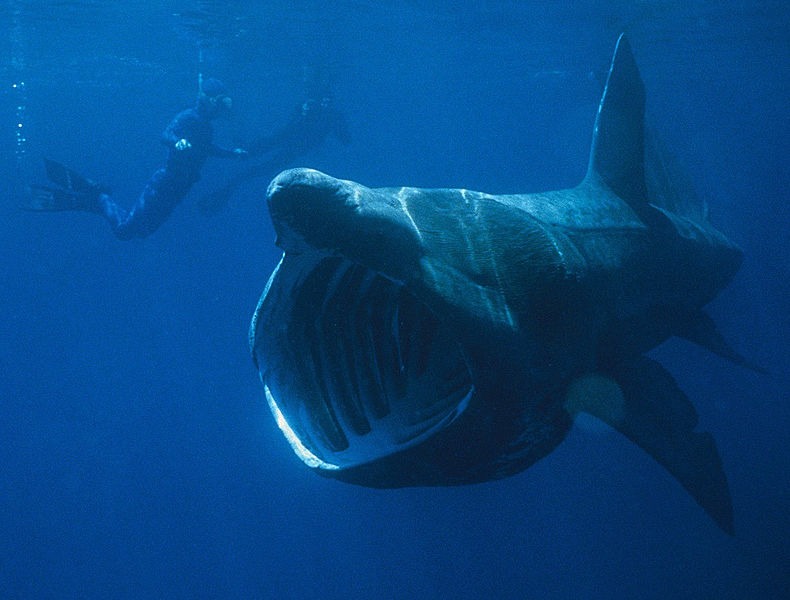
Basking sharks are gentle giants with 4-foot wide mouths.
©Chris Gotschalk / Public Domain, from Wikimedia Commons, the free media repository – License
Appearance: They are a greyish-brown color that appears mottled and somewhat wrinkled. They cruise on the surface of the ocean with their huge mouths open using their massive gill rakers to filter through the water. They have hundreds of very tiny teeth and a liver that accounts for 25% of their body.
Size: These gentle giants grow up to 40 feet long and weigh 11,000 pounds.
Diet: They primarily eat microscopic zooplankton.
3. Grey Seal (Halichoerus grypus)
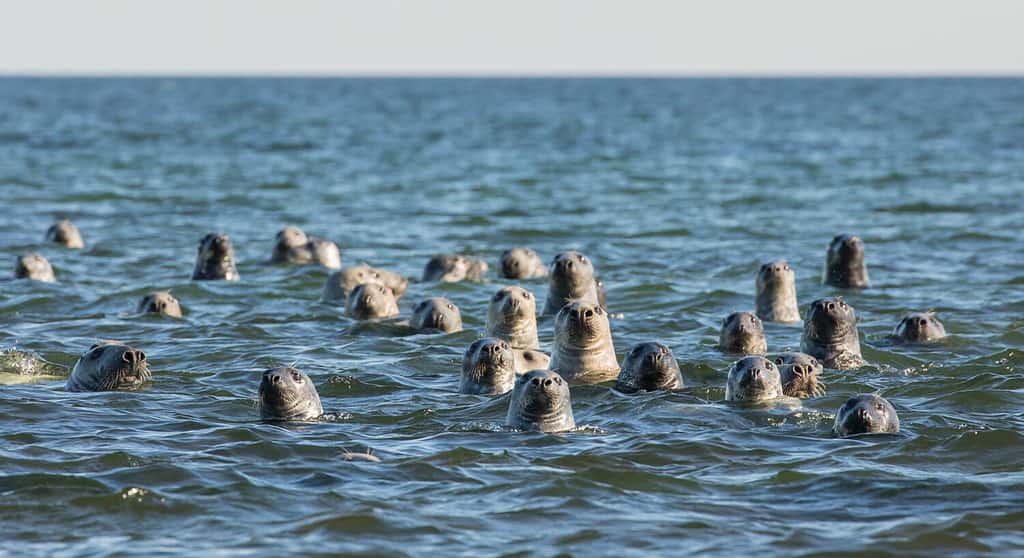
Grey seals have excellent hearing and vision when underwater, making them apex predators in the Baltic Sea.
©F-Focus by Mati Kose/Shutterstock.com
Appearance: These cute animals have large black eyes, long whiskers, and large nostrils and share the head shape of a dog. The seals have a mottled grey with white or dark grey with lighter grey fur coloring. Sometimes, they can appear to have beige-colored fur with grey spots. The males are generally a darker grey or brown than the females.
Size: Female grey seals average 7.5 feet long and 550 pounds. Males average 10 feet long and 880 pounds.
Diet: The seals primarily eat fish but have also been known to eat octopuses, sea birds, crustaceans, and squid.
4. Spiny Dogfish (Squalus acanthias)

Spiny Dogfish do not bite but they can deliver a painful sting.
©Joern_k/Shutterstock.com
Appearance: The spiny dogfish are long and thin with a pointed snout. They are dark grey with a lighter grey or white underbelly. These sharks have two dorsal fins with two ungrooved stinging spines.
Size: These sharks can grow to over 4 feet long and weigh 22 pounds when fully grown. Males are smaller than the females at 3.3 feet long.
Diet: They eat small bony fish, crustaceans, octopuses, smaller sharks, and the egg cases of other sharks and squid.
5. Thorny Skate (Amblyraja radiate)

Skates are not related to rays but are instead more closely related to sharks.
©Joern_k/Shutterstock.com
Appearance: The skate has a flat, square-shaped body with triangular snouts and tails that are shorter than their body. Their upper side is covered with rose-like thorns. They are a shade of brown on their upper side while the underbelly is white or light colored.
Size: They can reach 3.4 feet long and have a weight of 25 pounds when fully grown.
Diet: They prefer to dine on small fish, crustaceans, and worms.
6. Small Spotted Catshark (Scyliorhinus canicula)

This small shark is sometimes called a round hound, morgay, or sandy dogfish.
©iStock.com/atese
Appearance: The small shark is a light sand color with a darker-colored saddle and spots. The spots are dark grey, dark brown or black. They are long and thin and have large cat-like eyes and a blunt snout.
Size: The catshark can reach a length of 39 inches and weigh up to 3 pounds.
Diet: They mainly eat bony fish, crustaceans, small octopuses, squid, and other small invertebrates.
7. Angleshark (Squatina squatina)

The angel shark is also sometimes called a monkfish and is very similar to skates, which are also in the shark family.
©LuisMiguelEstevez/Shutterstock.com
Appearance: These critically endangered sharks are a sandy color with darker coloring mixed in to create a camouflaged look that they use to their advantage while scouring the sandy floor.
Size: Females are smaller than the males and average 4.1 – 5.5 feet long. Males average 6 – 7.3 feet long. Both males and females can weigh up to 77 pounds.
Diet: They typically are found along the Continental Divide and eat small fish, crustaceans, and other invertebrates.
8. European Eel (Anguilla anguilla)
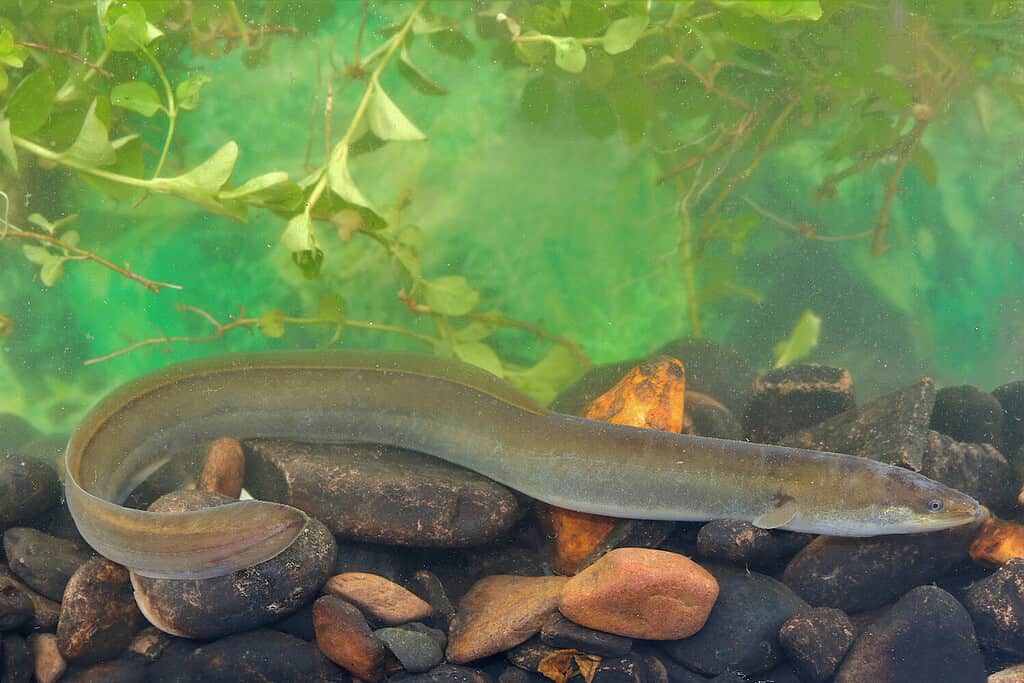
The European eel was once plentiful and is now critically endangered.
©ABS Natural History/Shutterstock.com
Appearance: These skinny eels are long and muscular. They have slit-like gills and one pair of pectoral fins. They do not have spines in their fins. These eels change color with the salinity of the water. They are darker in freshwater than they are in salt water. They have a yellow-brown belly until they mature between 5 – 20 years, then they have a white belly with silver sides. Their upper body is an olive green to brown color.
Size: The European eels are 2 – 4.9 feet long and weigh between 3 – 8 pounds.
Diet: Their primary diet consists of small fish and invertebrates like mollusks and crabs. They also scavenge dead fish and eat worms.
9. Bluntnose Sixgill Shark (Hexanchus griseus)

Bluntnose Sixgill sharks are very rarely seen because of their timid nature.
©Greg Amptman/Shutterstock.com
Appearance: The bluntnose sixgill shark is large with a blunt stubby-looking nose. They have a large head and thick muscular body. Their upper is a greenish-brown, tan, or black with dark spots along their sides. They have a lighter-colored lateral line down their sides and on their fins.
Size: These sharks can grow to 18 feet long and up to 1,300 pounds.
Diet: The sharks eat large cartilaginous or bony fish and rays.
10. European Pike (Esox Lucius)
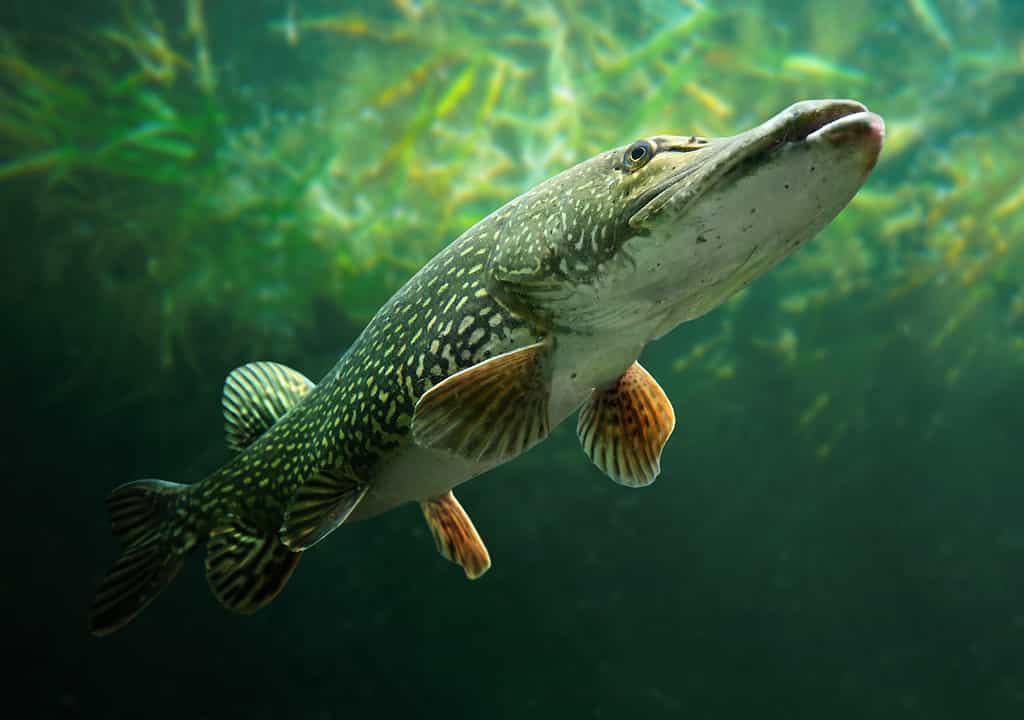
The European or Northern pike is one of the most common fish in the Baltic Sea.
©iStock.com/abadonian
Appearance: The European pike’s head has a bony appearance and their bodies are long and narrow. They have many sharp teeth and their eyes are right above their snouts. They have darker-colored bodies with lighter spots and are typically a greyish-green color.
Size: The pike can range from 15 – 22 inches long and weigh as much as 5 pounds. However, some have been caught that have weighed 63 pounds and 59 inches long. In North America, they are traditionally smaller.
Diet: They primarily eat small fish, frogs, small birds, and even small mammals. They are opportunistic hunters and aren’t picky when it comes to fish. They will even eat their kind.
11. Ringed Seal (Pusa hispida)
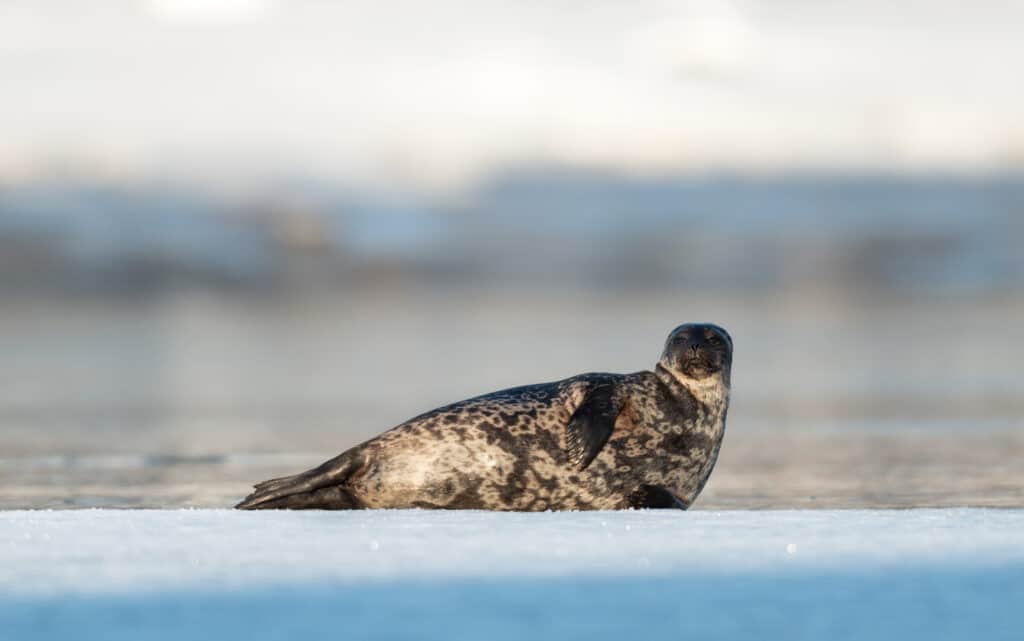
Ringed seals are the most abundant seals in the Northern Hemisphere.
©Sergey Uryadnikov/Shutterstock.com
Appearance: The ringed seals have dark grey or black faces with a mottled black and light beige or light grey mottling on their bodies. The lighter color is made up of rings which is where it gets its name. They have long whiskers and large dark eyes.
Size: The seals are 3.6 – 5.7 feet long and weigh 70 – 270 pounds.
Diet: The seals’ diet consists of invertebrates, fish, amphibians, cephalopods, euphausiids, amphipods, mysids and shrimp. They are opportunistic hunters and will eat almost any kind of fish or small animal.
12. Sea Trout (Salmo trutta)
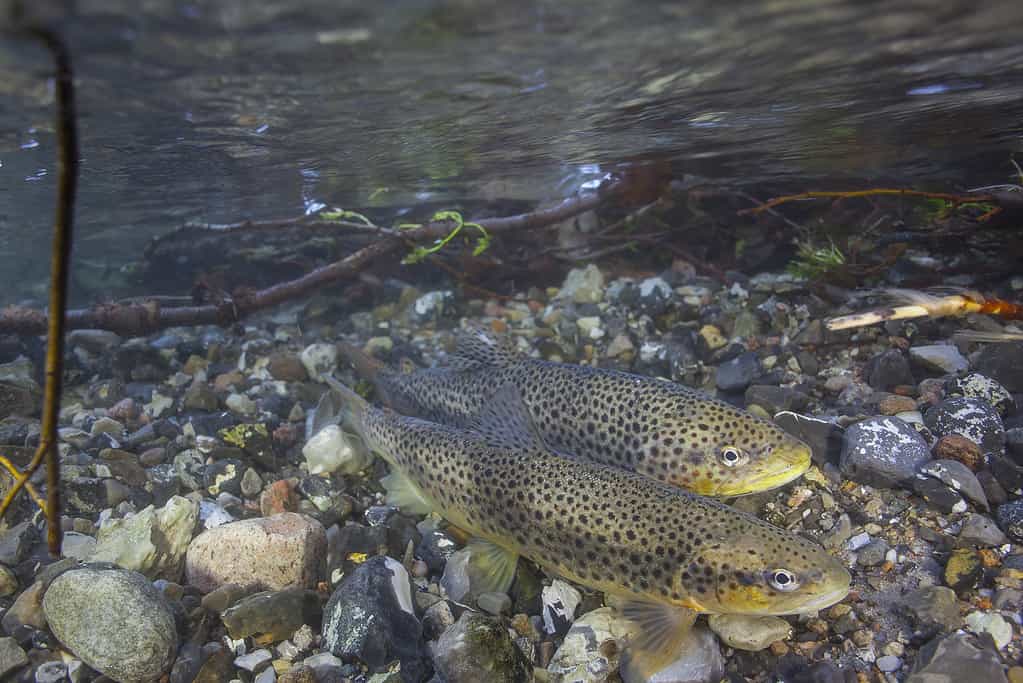
Sea trout are one of the top fish anglers seek out in the Baltic Sea.
©iStock.com/DanBachKristensen
Appearance: The fish are long silvery torpedoes and are spotted. They can vary slightly in coloring.
Size: They can reach up to 4 feet long and 20 pounds. The trout are 15 – 24 inches long and 5 – 10 pounds on average.
Diet: The trout eat other fish, crustaceans, worms, shrimp, and prawns.
13. Porbeagle Shark (Lamna nasus)
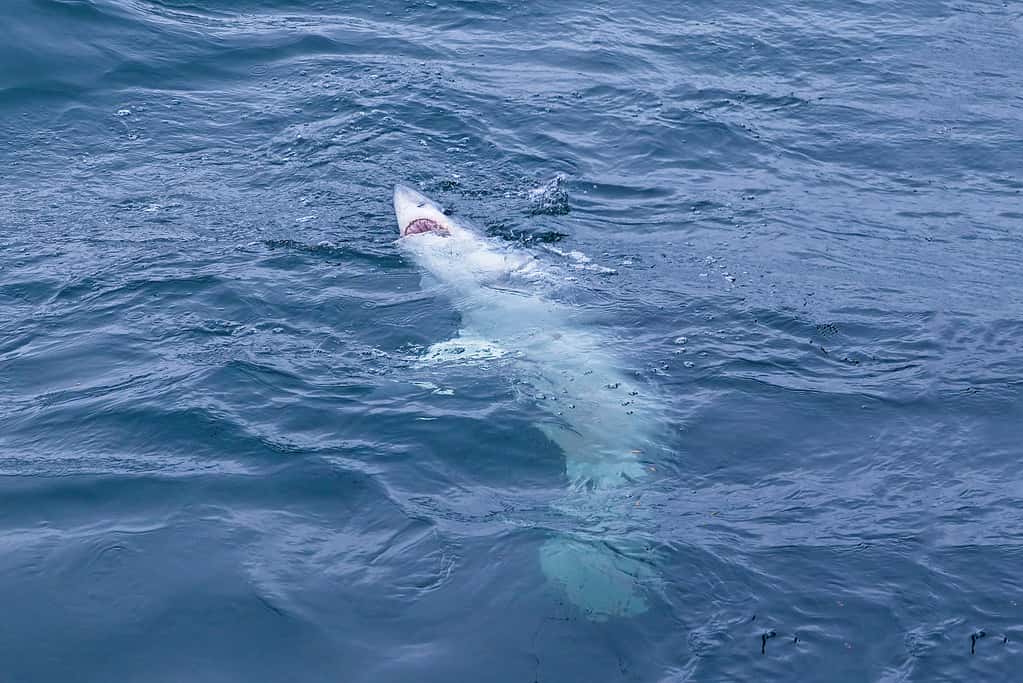
The Porbeagle shark is a large mackerel shark, similar to the Great White and Mako sharks.
©birdsonline/ via Getty Images
Appearance: They are very similar to great white sharks, only smaller. They have a dark to light grey upper with a white underbelly.
Size: The sharks average 5 – 12 feet and up to 500 pounds with the females being larger than the males.
Diet: The porbeagle prefers large bony fish, octopus, squid, and even other sharks.
Pollution in the Baltic Sea
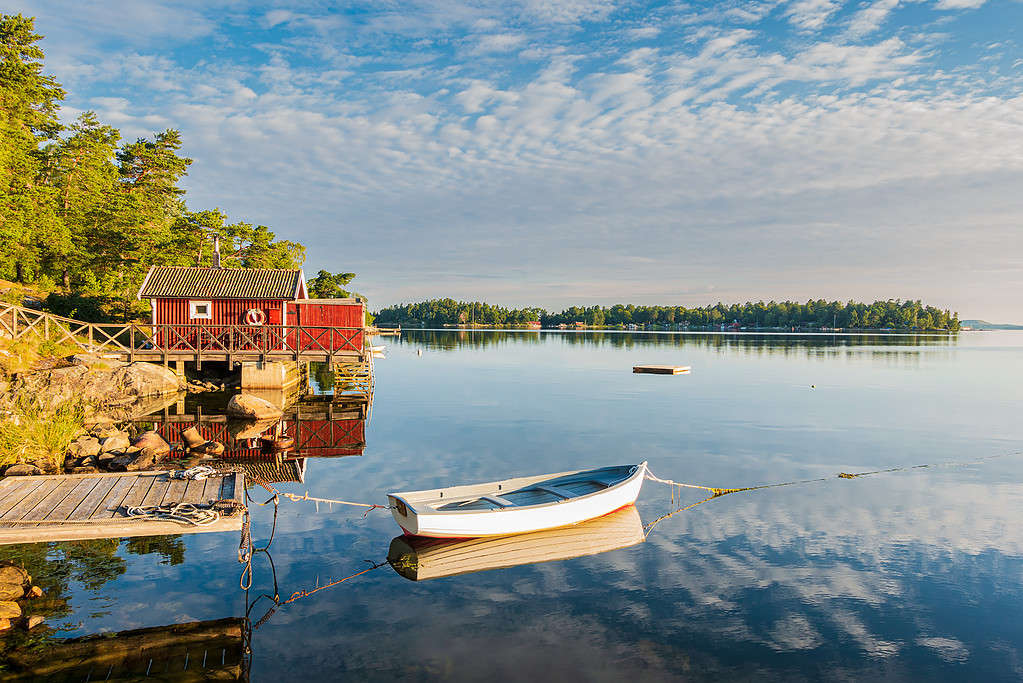
The pollution has been lessened by 50% but there is a long way to go before the Baltic Sea is healthy.
©RicoK69/iStock via Getty Images
Since the Baltic Sea is almost landlocked, it bears the weight of more pollution than most bodies of water. The leading pollution is industrial and municipal waste that is routed directly into the sea. Before the 1980s, papermills and cellulose plants contaminated the sea by dumping toxic chlorinated compounds in it. Much of that pollution is still in the sediment at the bottom of the Baltic Sea and is stirred up with low currents.
In July 2023, a sewage treatment plant in western Latvia’s wall collapsed and dumped 1,250 tons of raw sewage into the Baltic Sea. The sewage leaked for two days until it was stopped. Geologists have said the sewage did not hurt the flora or fauna, though many are skeptical.
The Baltic Sea remains one of the most polluted bodies of water on earth. The nutrient runoff from agriculture creates deadly algae blooms that deplete the water of oxygen. Between climate change, overfishing, and pollution, the Baltic Sea has a long way to go to heal the damages. The rivers feeding into the sea are also extremely polluted which just worsens the condition of the sea. The Baltic cod fishing industry has collapsed from a lack of cod.
But Is It Safe to Swim?

When you choose to swim in wild water, no matter where it may be, you are accepting the risk that comes along with it.
©l i g h t p o e t/Shutterstock.com
The short answer is no, but do as you please. With the water temperature remaining hypothermic cold all year, the large level of pollution, and the wildlife, it seems that it would be best to stick to safer waterways. The Baltic Sea is shallow, which means that when storms roll in or when the wind picks up, the tide can quickly become dangerously rough.
If you are a cold water trained swimmer, do not care about the possible pollution level of the water, and feel up to the task of swimming with potentially dangerous wildlife, you might just enjoy the Baltic Sea. It has beaches for a reason, after all. Keep in mind that the water temperature remains 50 – 64 degrees Fahrenheit, which seems like a good enough reason to stay on land.
FAQ
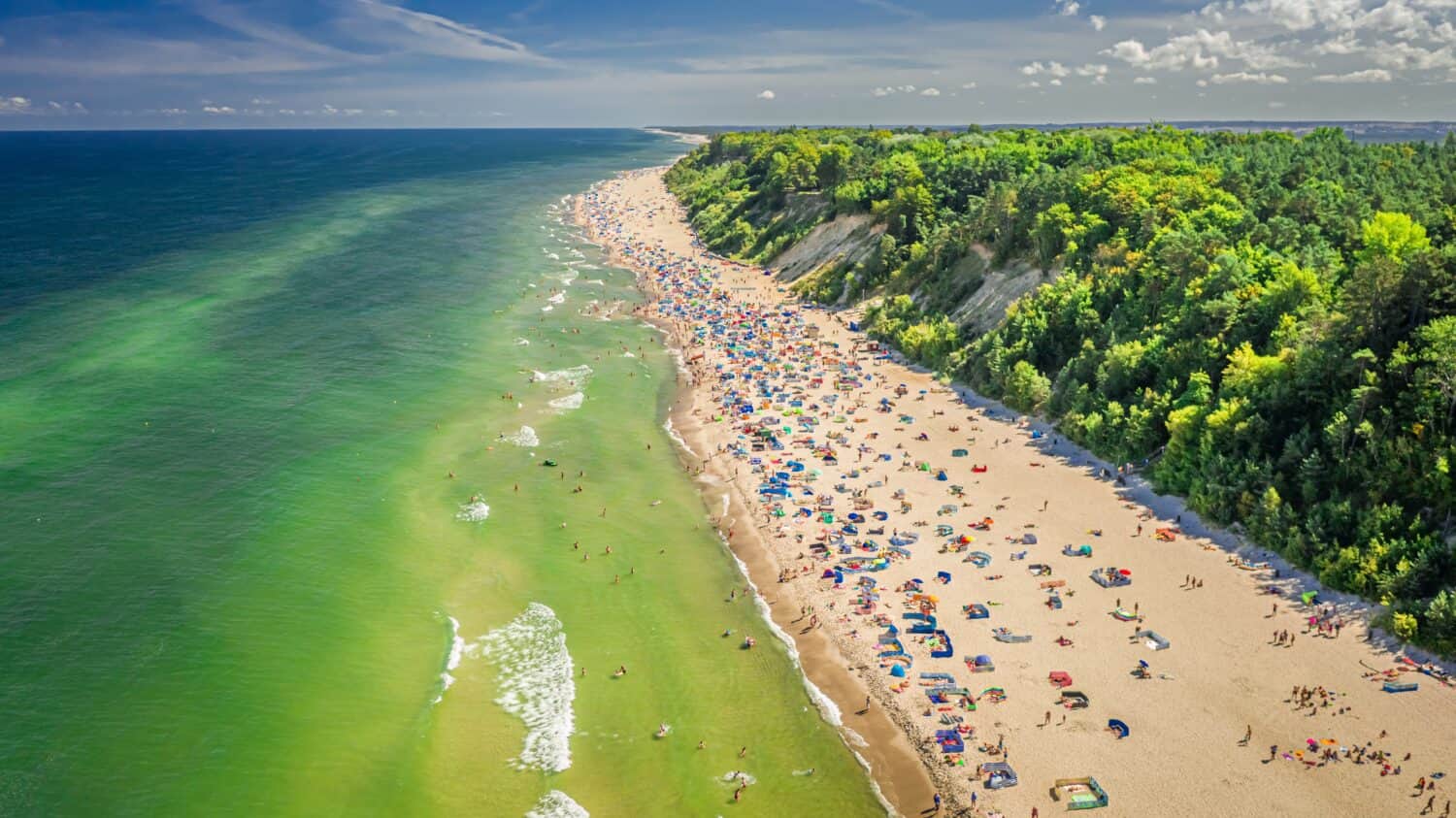
The beach is a fun place no matter how cold the water might be.
©Shaiith/Shutterstock.com
Q: What is the Baltic Sea famous for?
A: The Baltic Sea is the world’s largest body of brackish water.
Q: Are there whales in the Baltic Sea?
A: The closest thing to a whale is the harbor porpoise. It is critically endangered with as few as 500 remaining today.
Q: Why is the Baltic Sea so brown?
A: The color is from the rivers feeding sediment into the sea which consists of mud, and sediment. This is exasperated when the snow begins to melt and washes more soil into the rivers.
Q: What are the most common fish in the Baltic Sea?
A: The most common fish are the cod, herring, and sprat followed closely by the pike, trout, and flounder. The herring, cod, and sprat are the most commercially fished.
The photo featured at the top of this post is © Shaiith/Shutterstock.com
Thank you for reading! Have some feedback for us? Contact the AZ Animals editorial team.






